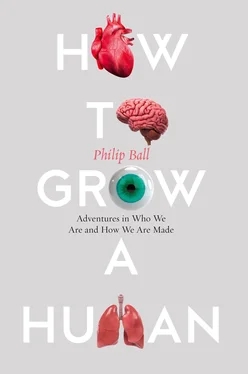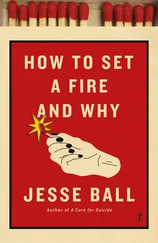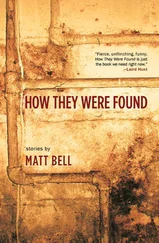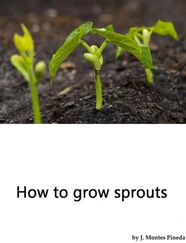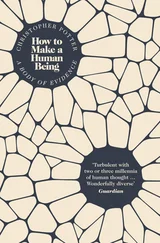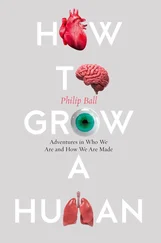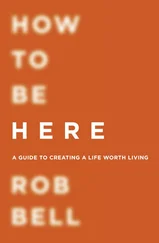1 ...8 9 10 12 13 14 ...20 You might compare it to the exclamation “Stop it!” Is that an instruction? Well, of course you don’t know from that enunciation alone what it is you are supposed to stop, but perhaps you might regard it as a generic instruction to desist from the activity you’re engaged in. But what if you hear someone shout “Stop it!” as you see a football rolling towards a cliff edge? Is that an instruction to desist in anything, or on the contrary an injunction to action? You need to know the context.
* * *
The gene-centred narrative of life is just one example of our urge to somehow capture the essence of this complicated, astounding process – to be able to say “life starts here!” Science’s reductionist impulse gets a bad press, but breaking complicated things down into simpler ones is a tremendously powerful way of making sense of them. I think that what many people who complain about reductionism are reacting against is not so much this process of analysis – of taking apart – in itself, but the tendency then to assert “this is what really matters”. Science has sometimes been a little slow to recognize the problem with such assertions. When one group of physicists started insisting it was going to find a Theory of Everything – a set of fundamental laws from which the entire physical universe emerged – others pointed out that it would be nothing of the kind, because it would be useless in itself for predicting or explaining most of what we see in the world.
It’s not just that we should resist the temptation to see reductive analysis as a quest to identify what is more important/fundamental/real in the world. Sometimes the phenomenon you’re interested in only exists at a particular level in the hierarchy of scale , and is invisible above and below it. Go to quarks and you have lost chemistry. With genes and life it is not quite that extreme – but at the level of genes you are left with only a rather narrow view of some of the entities and processes that underpin this notion we call “life”. Life remains a meaningful idea from the macro level of the entire biosphere of our planet right down to the micro level of the cell. Within those bounds it encompasses a whole slew of factors: flows of energy and materials, the appearance of order and self-organization, heredity and reproduction. But below the level of the cell, you’ll always be overlooking something vitally important in life. As Franklin Harold has put it:
Something is not accounted for very clearly in the single-minded dissection to the molecular level. Even as the tide of information surges relentlessly beyond anyone’s comprehension, the organism as a whole has been shattered into bits and bytes. Between the thriving catalog of molecules and genes, and the growing cells under my microscope, there yawns a gulf that will not be automatically bridged when the missing facts have all been supplied. No, whole-genome sequencing won’t do it, for the living cells quite fail to declare themselves from those genomes that are already in our databases … The time has come to put the cell together again, form and function and history and all.
It is precisely the multivalent, multiscale implication of the word “life”, too, that creates the tensions, ambiguities and ambivalences about what it means to “grow a human”. We are thereby “making a life”, but not “making life”. That same truth is spoken in jest in a cartoon by Gary Markstein in which two white-coated scientists contemplate IVF embryos. “Life begins at the Petri dish!” exclaims one embryo; “Cloning for research!” demands another. “Even the human embryos are divided”, sighs a scientist.
This is the struggle we face in reconciling our notion of life as human experience with the concept of life as a property of our material substance. We are alive, and so is our flesh. While those two visions of life were synonymous, we could ignore the problem. Having a mini-brain grown in a dish from a piece of one’s arm tends to make that evasion no longer tenable.
It’s no wonder that different cultures at different times have had such diverse attitudes to the connection between the human body in utero , forming in hidden and mysterious fashion from something not remotely human-like, and the human body in the world. The insistence by some people and in some belief systems that “life begins at conception” is a modern utterance, often claiming firm support from the very science that in fact shows how ill-defined the idea is.
But the tension is an old one, as demonstrated by preformation theories of the human fetus. This was an anthropomorphization of the cell as explicit as that in cartoons that attribute voices and opinions to human embryos in petri dishes. Intuition compels us to look for the self in the cell. An insistence on locating it instead in our genes – as cell biologist Scott Gilbert puts it, to see “DNA as our soul” – comes from the same impulse. Perhaps we must be gentle in dispensing with these superstitions. Aren’t old habits always hard to shake off?
CHAPTER 2
BODY BUILDING
GROWING HUMANS THE OLD-FASHIONED WAY
So far, nothing beats sex. Biologically, I mean. If you want to grow a human, you need a sperm and an egg cell – the two cell types called gametes. And you need to get them together. That’s an objective towards which an immense amount of our culture is geared.
In describing the process in which a fertilized egg develops into a person, I hope in this chapter to give back some of the strangeness, the proper unfamiliarity, to embryology: to show how removed our individual origins are from the comforting intimacy of the gracefully curled fetus that is generally our first ultrasonic glimpse of a new human person.
We are folded and fashioned from flesh in its most basic form, according to a set of instructions that is far removed from a kind of genetic step-by-step. We are shaped from living clay according to rules imperfectly known and often imperfectly executed, and which orchestrate a dance between the cell and its environment.
But there are many things you can potentially fashion from clay, if you know how to work the wheel. As we come to understand more about the emergence of the human ex ovo , we perceive new possibilities, new beginnings and routes and directions. And we change from watchers to makers.
* * *
There is no new narrative of human-growing that does not need to reckon with the preconceptions (so to speak) created by sex. Mary Shelley could not, in her day, make that context explicit – but Victor Frankenstein’s terror of his wedding night tells us all about the psychosexual undercurrents in his onanistic act of creation. I won’t therefore attempt the same evasion as the school biology lesson by beginning the embryo’s tale with sperm meeting egg; by that stage sex has, as we’ll see, already imposed itself on the story.
We should in any case be continually amazed, surprised and possibly even a little proud at how imaginatively we have elaborated, ritualized and celebrated the urge to procreate. This shouldn’t be seen so much as proof that evolutionary psychology can “explain” culture – the banal observation that because of our instinct for sexual reproduction we write stories like Romeo and Juliet and create entertainments like Love Island – but rather the opposite. Evolutionary psychology by itself offers a rather threadbare and reductionist narrative for understanding the rich tapestry of culture. Sure, we can attribute to the sexual drive everything from a worship of lingams in Indian tradition to the Tudor enthusiasm for prominent red codpieces, 1the hegemony and variety of internet porn and the exquisite faux-pheromone concoctions of perfumeries. But then we will have not really said much that illuminates the particulars of any of those diverting cultural phenomena, will we?
Читать дальше
